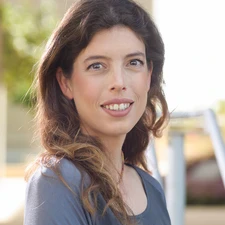Liran Goren

GM Geomorphology
The 2018 Division Outstanding Early Career Scientist Award is awarded to Liran Goren for her application of physical principles implemented with solid mathematical rigour into models of wide application in the Earth-surface sciences.
Liran Goren is one of the most talented and competent young researchers applying numerical models to the study of Earth surface processes globally. Her characteristic mathematically rigorous approach based on physical first principles is the product of an unconventional and non-linear career path that started in geophysics and the study of granular material flow, but has since concentrated on the study of landscape evolution through both forward and inverse numerical modelling of fluvial processes at the scale of mountain belts and even continents.
After dual undergraduate degrees in geological and computer sciences, Goren worked during her masters on the deformation of passive margins and initiation of subduction, before moving on to study coupled fluid-granular behaviour with applications to fault zones and long-runout landslides during her PhD. She started her work on the modelling of river profiles and interpretation of the spatial and temporal evolution of stream power after starting a post-doctoral position at ETH Zürich. Such radical shifts at an early career level are unusual and risky, but Goren managed this very well, quickly establishing herself as a significant contributor in a new field. During her time at ETH, she contributed, amongst others, to papers in Science, Nature and Nature Geoscience. Although these were all multi-authored papers, her contribution to each was clear and substantial. In all cases, she was the leader of the numerical modelling component of these studies, and was responsible for design, implementation and interpretation of the models.
Goren’s ability to construct careful, appropriate models is what sets her apart from the field. She is also an excellent communicator, able to get across fairly complex mathematical approaches to a geomorphological audience. Each of her papers is carefully crafted and it is the quality of her record that stands out. Her paper on modelling in ESPL was awarded the British Society for Geomorphology Best Paper Award for 2014, providing evidence of her pedagogic qualities. Now that Goren has gone on to a lectureship at Ben Gurion University of the Negev, she is taking on a new leadership role, as shown by several recent first-authored contributions, including an elegant new development of the analytical treatment of transient river profiles and the definition of river response times.
